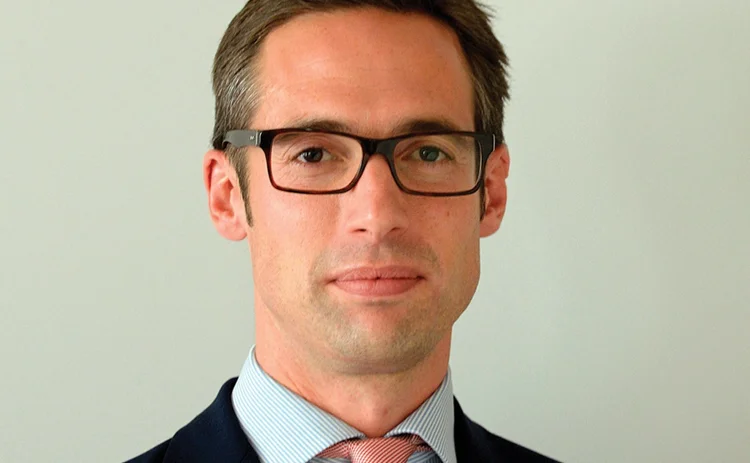
Best in Switzerland: UBS
Structured Products Europe Awards 2015: As investors in Switzerland dealt with negative interest rates and the SNB’s sudden decision to remove its currency floor in January, UBS stepped forward with a number of structures tailored to the unique market conditions

On January 15, the Swiss National Bank suddenly removed the currency floor it had maintained for more than three years to keep the euro/Swiss franc exchange rate above 1.20. The move took the markets by complete surprise, with the Swiss franc rocketing by nearly 30% against the euro on the same day.
Upward pressure on the Swiss franc had been building for some time prior to January as investors looked to safe-haven currencies in the face of a slow economic recovery in the eurozone. But it was the prospect of quantitative easing from the European Central Bank that led to the removal of the floor. Swiss investors suddenly needed to place a lot of cash they didn't necessarily want to risk in volatile markets, while negative interest rates made it very difficult for banks to create capital-protected products.
UBS came to the fore with a range of solutions. For clients facing prohibitive costs to remove currency risk, the bank instead offered the option of systematically rolling forex forwards on a monthly or quarterly basis as an overlay on other products. At least $5 billion in equity derivatives with the rolling forex hedge had been transacted on a notional basis by the end of September.
"At the beginning of each month, for example, we would check the notional outstanding on a particular product and trade one or multiple forex forwards on the currencies you want to hedge. If the notional value of your product changes, you're going to be slightly over- or under-hedged until the next month, but clients are willing to take this calculated risk," says Adrian Steinherr, co-head of equity derivatives sales for Switzerland at UBS in Zurich.
The bank was also able to structure various yield-enhancement products and partial capital-protected products that typically contained upside participation in an underlying asset with a volatility target or an additional credit exposure to further enhance the yield.
The flexibility UBS offers on how often we can trade and adjust our exposure is excellent
One example of this is the bank's lock-in certificate based on the UBS Bloomberg CMCI WTI USD Excess Return index, which was issued in September. Oil has been at the forefront of highly volatile commodity markets and has switched between bear and bull mode several times during the course of 2015. The certificate has several ‘lock-in' levels. Once a certain level is reached, a payout at least at that level becomes due at maturity regardless of subsequent price movements in the underlying asset. If a lock-in level is not reached at any time during the five-year term, the product functions like a conventional tracker certificate. Sales of notes with similar structures totalled more than $130 million this year alone, according to UBS.
"Most of the volumes we trade are with UBS," says Peter Sigg, head of commodity products at LGT Capital Partners in Pfäffikon near Zurich. "They structured us a combination of certificates and swaps where we have the flexibility to implement our strategy across a broad range of commodities and points along the forward curve. The flexibility they offer on how often we can trade and adjust our exposure is excellent."
UBS has also continued to lead the way in actively managed certificates with predominantly equity underlyings, with a notional outstanding of around $2 billion and a growth in sales of roughly 30% over the past year. The popularity of such products has increased ahead of the introduction of the Swiss Financial Institutions Act, which is expected to take effect in 2017 and will increase operating costs for Swiss asset managers, according to Steinherr.
Another factor that lies behind certificates' increasing popularity is their similarity to investment funds, only without the administrative burden, he says.
"In a fund, you will have to deal with trustees, administrators and restrictive portfolio guidelines, which makes it quite a complex product. A certificate is simpler, and it gives the client a lot more control," says Steinherr. "If you wanted to bring a Swiss fund to the market right now, it could take nine to 12 months. There's a huge backlog. If you were going to use a certificate, it could take as little as a week or two."
For the structured investments adviser at one private bank in Geneva, UBS's strength is in providing flexibility in terms of asset availability for its actively managed certificates. "I manage certificates for a special category of small- and mid-cap stocks, and UBS tries very hard to give me access to markets that are not the most liquid. The bank has a global trading presence and local access to smaller brokers," he says.
Only users who have a paid subscription or are part of a corporate subscription are able to print or copy content.
To access these options, along with all other subscription benefits, please contact info@risk.net or view our subscription options here: http://subscriptions.risk.net/subscribe
You are currently unable to print this content. Please contact info@risk.net to find out more.
You are currently unable to copy this content. Please contact info@risk.net to find out more.
Copyright Infopro Digital Limited. All rights reserved.
As outlined in our terms and conditions, https://www.infopro-digital.com/terms-and-conditions/subscriptions/ (point 2.4), printing is limited to a single copy.
If you would like to purchase additional rights please email info@risk.net
Copyright Infopro Digital Limited. All rights reserved.
You may share this content using our article tools. As outlined in our terms and conditions, https://www.infopro-digital.com/terms-and-conditions/subscriptions/ (clause 2.4), an Authorised User may only make one copy of the materials for their own personal use. You must also comply with the restrictions in clause 2.5.
If you would like to purchase additional rights please email info@risk.net
More on Awards
Trading systems: structured products/cross-asset – Murex
Murex won the Trading systems: structured products/cross-asset award at the 2025 Risk Markets Technology Awards for its MX.3 platform, praised for its flexibility and advanced analytics
Best vendor for system support and implementation: Murex
Murex has won the Best vendor for system support and implementation at the Risk Markets Technology Awards, recognised for its innovative MX.3 platform, exceptional client support and seamless implementation services
FRTB-IMA product of the year: Murex
Murex wins FRTB-IMA product of the year for its advanced, scalable MX.3 platform enabling seamless regulatory compliance
Pricing and analytics: equities – Finastra
Finastra’s Sophis platform wins the Risk Markets Technology Award for Pricing and analytics in equities, recognised for its robust capabilities in equities and derivatives trading
Best execution product of the year: Tradefeedr
Tradefeedr won Best execution product of the year for its API platform, which standardises and streamlines FX trading data, enabling better performance analysis and collaboration across financial institutions
Collateral management and optimisation product of the year: LSEG Post Trade
LSEG Post Trade wins Collateral management and optimisation product of the year for interconnected services that help mitigate counterparty risk and optimise capital usage
Clearing house of the year: LCH
Risk Awards 2025: LCH outshines rivals in its commitment to innovation and co-operation with clearing members
Driving innovation in risk management and technology
ActiveViam secured three major wins at the Risk Markets Technology Awards 2025 through its commitment to innovation in risk management and technology







